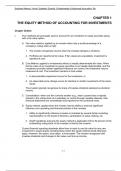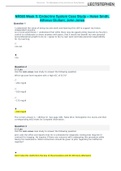Summary
Summary Organisational Development and change management - Kim De Meulenaere - UA - 2023/24
- Course
- Institution
- Book
This summary includes all organisational development and change management lessons taught by prof Kim De Meulenaere at the University of Antwerp. The lessons have been supplemented with information from the manual (in italics).
[Show more]












